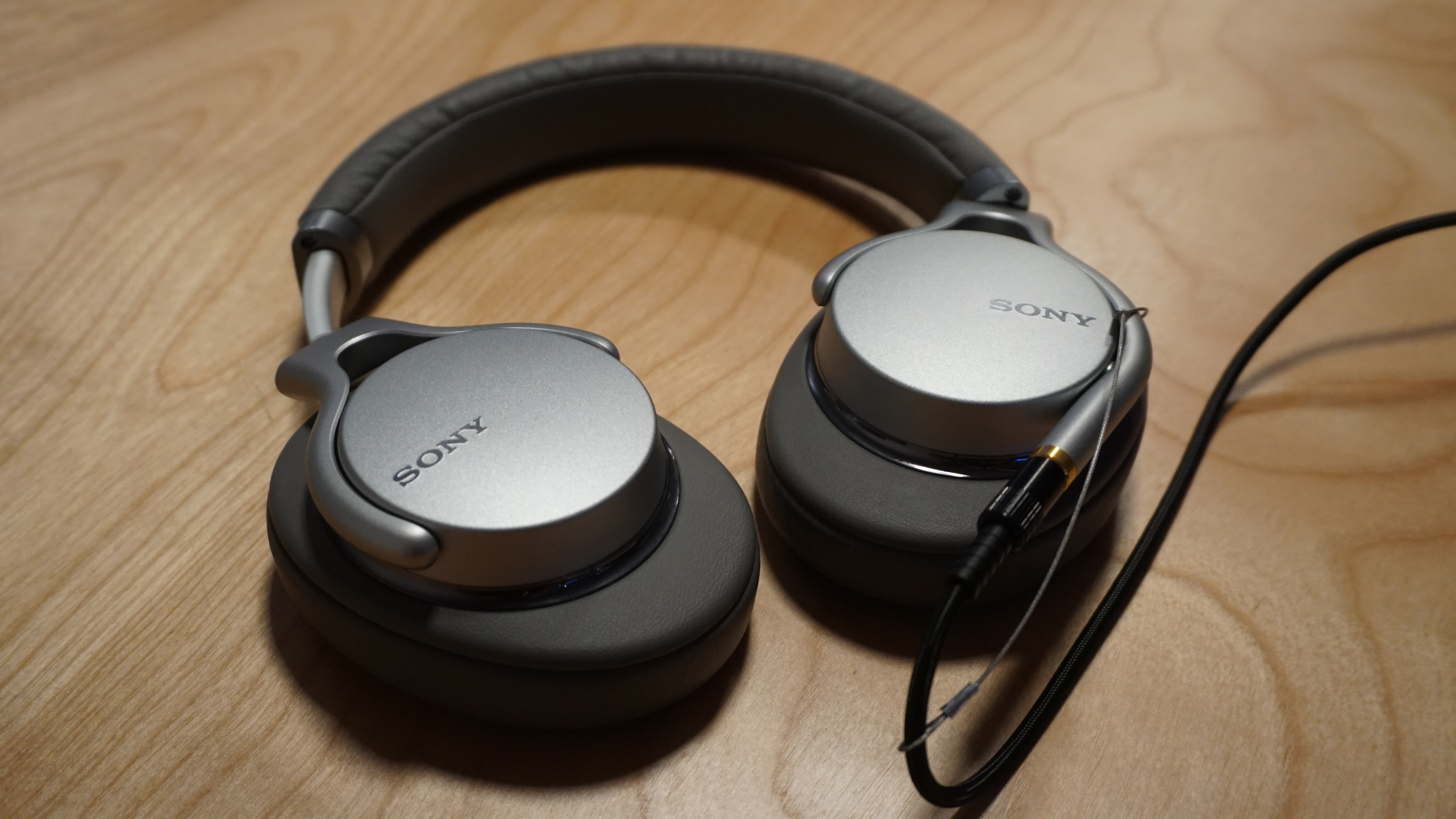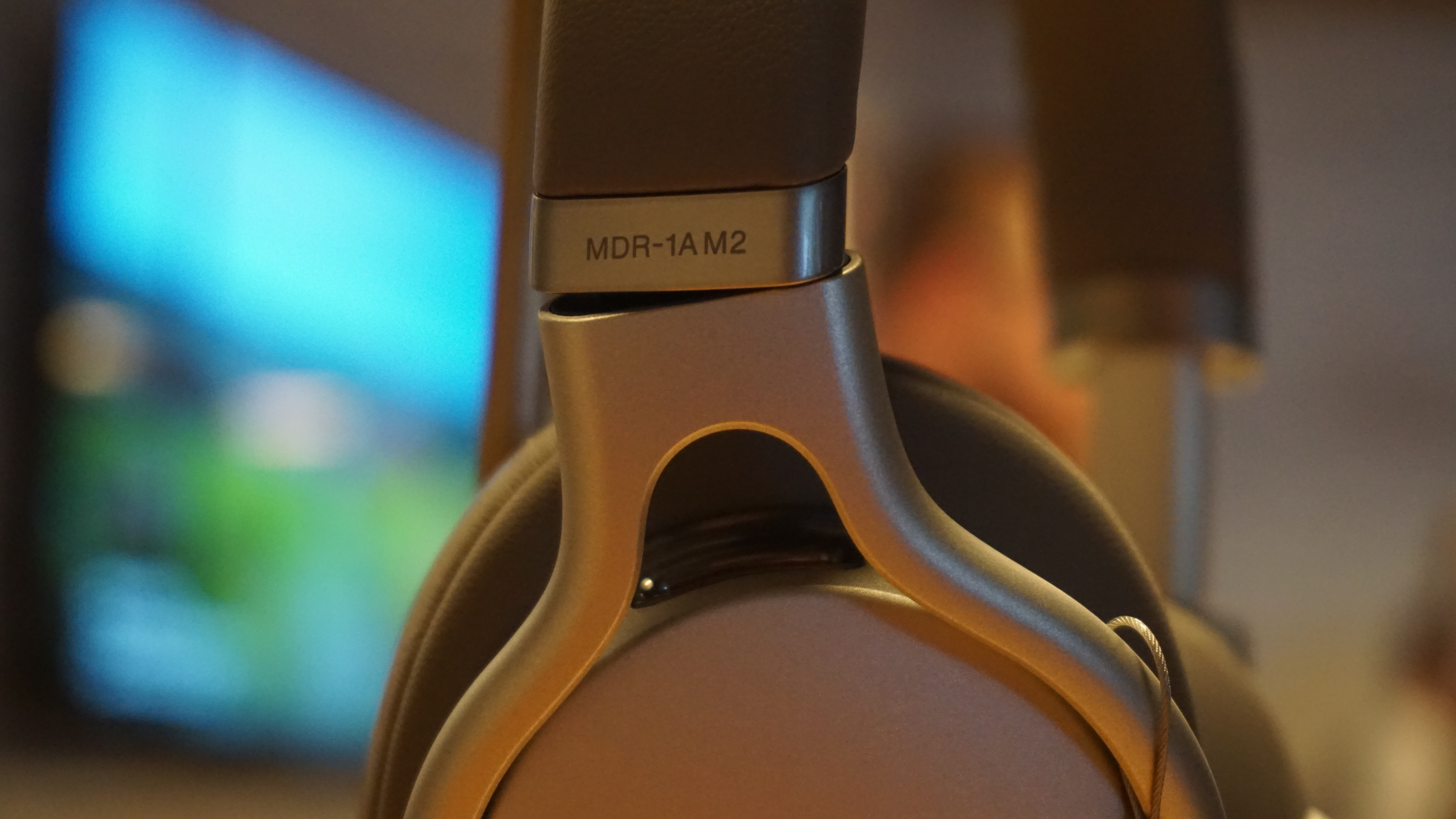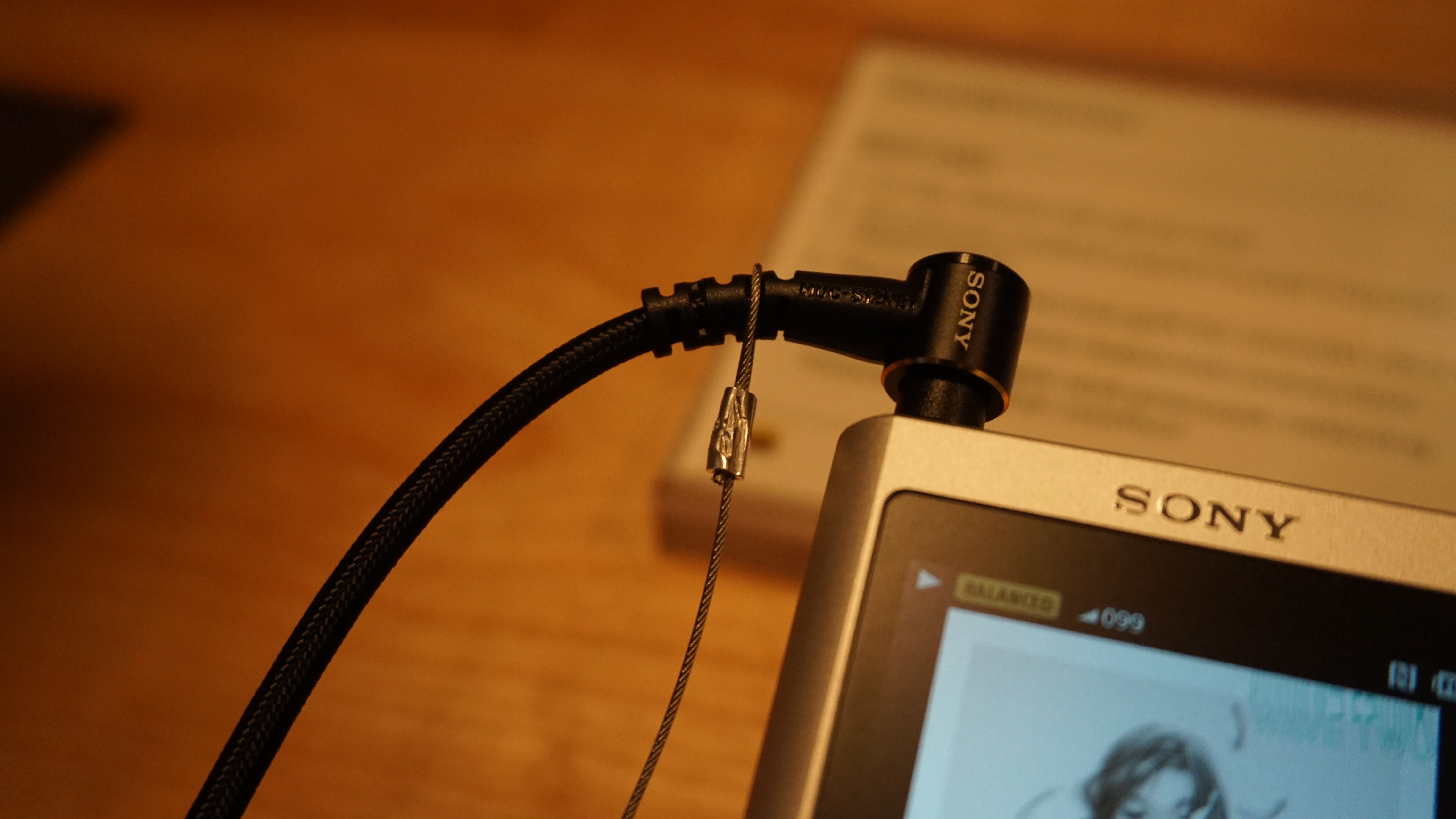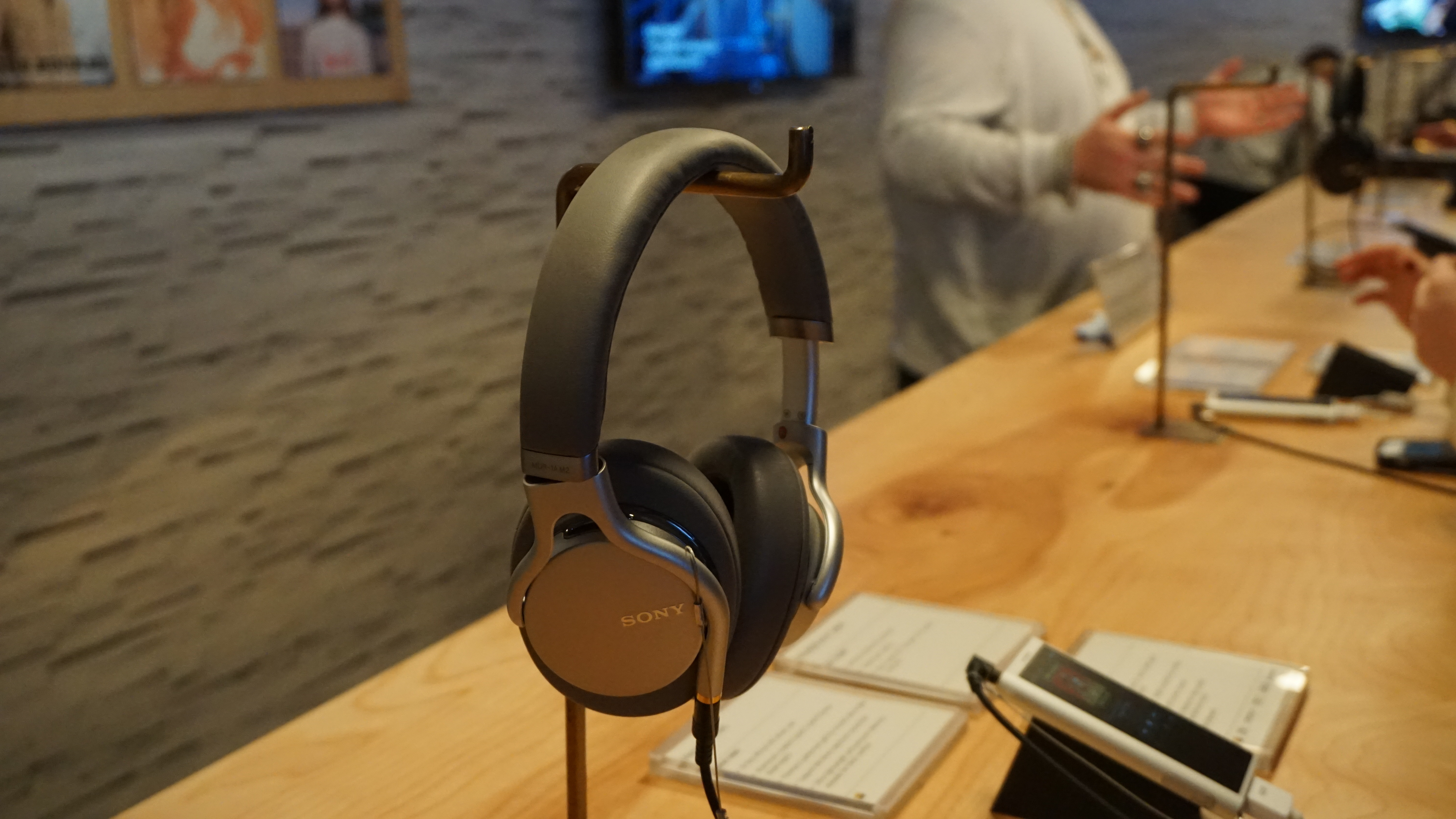Early Verdict
Affordable and approachable, the Sony MDR-1AM2 is a great starting pair of audiophile headphones. They’re not quite as clear as some of the highest-end headphones at CES but, for the money, they look to be an ideal introduction to Sony’s ever-expanding world of hi-res audio.
Pros
- +
Non-fatiguing highs
- +
Good bass response
- +
Synthetic leather earpads
Cons
- -
All-plastic construction
- -
Poor noise isolation
Why you can trust TechRadar
Sony has, for some time now, been a go-to brand for audiophile headphones. The company made a commitment to hi-res in 2016 when it announced its LDAC codec and has since leveraged the tech inside the Sony WH-1000XM2, one of the best noise-cancelling headphones on the market. (Sorry, Bose.)
Applying that same high-end approach to non-noise-cancelling headphones, Sony’s latest MDR-1AM2 Over-Ear Headphones sport 40mm drivers with Liquid Crystal Polymer diaphragms and a frequency response of up to 100,000Hz - or around five times what the human ear is capable of hearing.
Sony is targeting the spring for the launch of the new MDR-1AM2 headphones and a recommended retail price around $299 (around £220/AU$380).
Can’t wait until the flowers bloom to try Sony’s high-end headphones? Here’s what it’s like to put on a pair on a crowded show floor.

Design
The first thing that will surprise you when holding the MDR-1AM2 in your hands is how exceptionally light they are - especially so for a pair of high-end headphones. While other companies might load up their drivers with heavy components all in the name of higher quality audio, Sony proves that less can truly be more.
While their lightweight frame make them exceptionally comfortable to wear for extended periods of time, they also make them a bit on the fragile side.
The bridge, for example, is made of flexible, but oh-so-fragile plastic. The hinges, too, are all plastic. This makes the 1AM2 perfect for home listening (where they belong, naturally) but less appealing for folks who might like to bring their high-end audio gear with them wherever they go. For that, however, there’s always the WH-1000XM2, which are more of a blend of audiophile and travel-grade headphones.
Sign up for breaking news, reviews, opinion, top tech deals, and more.

Attached to the plastic bridge are 40mm HD driver units that house aluminum-coated liquid crystal polymer diaphragms. If that all sounds like an incoherent mess of jumbled words, all that means is the diaphragms have a certain solidity to them that reduce any resonance that detract from the quality of the sound.
The 1AM2 ships with two separate cables - one 4.4mm balanced audio cable and one standard 3.5mm cable. The 4.4mm cable, in case you’ve never heard of it, is the standard prefered by audiophiles due to the fact that it minimizes cable noise and reduces interference. For reference, the test unit at CES 2018 was attached with a 4.4mm cable and there was no 3.5mm cable option.

Performance
Because the testing occurred on a crowded show floor, it was relatively hard to make out the subtle nuances of the headphones.
That being said, we liked what we heard. Highs were resoundingly clear and warm, but never fatiguing. The bass response was similarly enough, but not too much. Bass-lovers will, as usual, have to go to companies like Beats or Skullcandy for the beefy lows but those seeking balanced audio will appreciate the MDR-1AM2.
More specifically, and to that point, they sound like entry-level audiophile headphones should. They didn’t have the same clarity that some of the higher-end headphones we listened to at CES had but, considering these were a quarter of the price, that’s to be expected.
Admittedly, every song wasn’t perfect: the highs could be a bit too sharp at times, piercing through the rest of the sound and muddying the balance. But, even then, it was still a respectable overall sound.

The headphones, it should be pointed out, were connected to one of Sony’s Hi-Def Walkman, the NW ZX300, which was only playing hi-res FLAC files. The headphones likely have a low enough impedance to work with most smartphones but, again, we were on a crowded show floor with locked samples so it was impossible to test.
Early verdict
Somewhere in between decent Hi-Fi headphones and price-conscious over-ears, the MDR-1AM2 seek to find the perfect balance between audio precision and a price that most can afford. It seems to strike the balance well - but, of course, one can only hear so much with 180,000 attendees speaking loudly right outside a listening booth. Look forward to the full review later this year for a comprehensive analysis of the highs, lows and mids of Sony's new flagship cans.
- New year, new tech – check out all our coverage of CES 2018 straight from Las Vegas, the greatest gadget show on Earth

Nick Pino is Managing Editor, TV and AV for TechRadar's sister site, Tom's Guide. Previously, he was the Senior Editor of Home Entertainment at TechRadar, covering TVs, headphones, speakers, video games, VR and streaming devices. He's also written for GamesRadar+, Official Xbox Magazine, PC Gamer and other outlets over the last decade, and he has a degree in computer science he's not using if anyone wants it.
What is a hands on review?
Hands on reviews' are a journalist's first impressions of a piece of kit based on spending some time with it. It may be just a few moments, or a few hours. The important thing is we have been able to play with it ourselves and can give you some sense of what it's like to use, even if it's only an embryonic view. For more information, see TechRadar's Reviews Guarantee.
